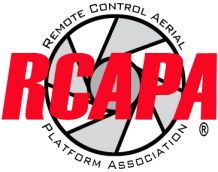
Patrick Egan, Director of Special Programs for the RCAPA, wrote the statement. Mr. Egan, also the editor of the Americas desk at sUAS News, began the RCAPA statement by speaking “On behalf of the membership, unrepresented hobbyist and the public at large…The Remote Control Aerial Platform Association (RCAPA) contends that the unaffiliated RC hobbyists stakeholder was disenfranchised in this instance, as they had no credible and or qualified representation.”
The statement hits a nerve with many drone enthusiasts, who feel that while industry was well represented on the FAA Task Force that made the registration recommendations, the hobbyists who will be required to register were not. The RCAPA statement contends that many of the task force members lobbied to be included, and were clearly not impartial to the outcome.
Beyond the complaints of other organizations and Mr. Taylor, the gentleman bringing suit against the FAA, that the laws were not legal based on previous legislation, the RCAPA statement points out that the fear-mongering language over “sightings” and the “science” used to dazzle the public about the dangers of objects weighing 250 grams (remember those pages of math equations?) in the Task Force Recommendation statement may be significantly flawed.
It appears that the FAA may have been caught up in the “drone” hysteria. Yes, we understand there have been more reported drone “sightings”, but do we know if this is as a result of the public becoming more aware of drones or something dire? We can only guess, because none of the data from “near miss” incident packages (FAA order 8020.11) have been shared with the public as part of the recommendations…How are we to discern if the purported “sightings” even met the criteria for Critical, Potential or No Hazard situations?
In regards to the information put forth by MITRE, we are very disappointed with its apples to oranges comparison being included in the recommendation. It lacks intellectual honesty, in that projectiles from explosions (shrapnel and projectiles) are compared to drones. Material density is a factor that was omitted.
The above refers to the Task Force statement’s reference of a 2012 MITRE study titled “A New Paradigm for Small UAV.” Mr. Egan makes a good point: upon a closer reading of the study it would seem that the Task Force chose to quote very selectively. The study offered some predictions about the kinetic force and lethal impact of flying objects, using baseballs and golfballs as a baseline, cited by the Task Force as informing their decision to require registration for small drones. The MITRE paper also includes, however, this statement about the potential danger of small UAV, which might lead to a different conclusion:
In the event of a collision, the small size and frangibility of the small UAS may not result in a catastrophic loss…In August of 2011, a US C130 collided with a RQ-7, Shadow, in Afghanistan. 12, 13 While there was some damage to the C130 and the RQ-7 was a total loss, the C130 was able to land safely with no injuries. …the RQ-7, at maximum gross weight 460 pounds14, weighs significantly more than the small (20 pound or lighter) UASs which are envisioned to be operated under the new paradigm…There are a number of documented incidents where remote control model aircraft have had mid-air collisions with a manned aircraft without a catastrophic result‡.
The RCAPA points out that conflicting data make it difficult to make decisions about regulation, and complains that the December regulations represent “a knee-jerk ‘rush job’ with little or no facts to go on.”
In addition to a lack of input from the public and faulty science, the RCAPA states that the fines for non-compliance are out of line with the norm for the aviation industry, and concludes: “There is too much that is wrong with this scheme and implementing it in anything close to its present form is a mistake. We all deserve to have our voices heard in the public rulemaking process.”
With the AMA, the RCAPA, and a horde of drone and law experts weighing in against the latest regulations on hobby drones, the FAA’s credibility is being seriously called into question. As the deadline for drone registration draws near, and fewer than 200,000 of the reported 1,000,000 drones sold have registered, it is unclear if the registration program has any hope of succeeding.
Miriam McNabb is the Editor-in-Chief of DRONELIFE and CEO of JobForDrones, a professional drone services marketplace, and a fascinated observer of the emerging drone industry and the regulatory environment for drones. Miriam has penned over 3,000 articles focused on the commercial drone space and is an international speaker and recognized figure in the industry. Miriam has a degree from the University of Chicago and over 20 years of experience in high tech sales and marketing for new technologies.
For drone industry consulting or writing, Email Miriam.
TWITTER:@spaldingbarker
Subscribe to DroneLife here.